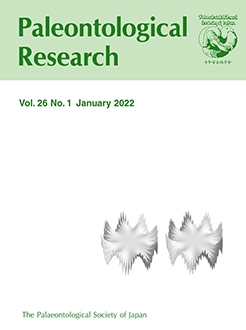We describe a new specimen of physeteroid from the lower Miocene (Burdigalian) of Japan. This specimen was recovered from the Toyohama Formation, Chita County, Aichi Prefecture, Japan in 1984 and includes a finely preserved cranium with detached teeth and ear bones (periotic, tympanic bulla, and malleus). Here we refer this specimen to a new genus and species of the Physeteroidea, Miophyseter chitaensis gen. et sp. nov. Our phylogenetic analysis suggests that Miophyseter is a physeteroid more closely related to the crown Physeteroidea (Physeteridae and Kogiidae) than the macroraptorial physeteroids that flourished in middle and late Miocene times. A deep and large excavation on the ventral surface of the palatine and pterygoid in Miophyster suggests an adaptation for deep dives and/or the development of robust pterygoid muscles for active biting.
How to translate text using browser tools
1 January 2022
A New Physeteroid from the Lower Miocene of Japan
Toshiyuki Kimura,
Yoshikazu Hasegawa
ACCESS THE FULL ARTICLE

Paleontological Research
Vol. 26 • No. 1
January 2022
Vol. 26 • No. 1
January 2022
Cetacea
Japan
Miocene
Miophyseter chitaensis
Odontoceti
Physeteroidea




